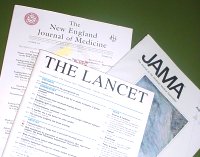In October 2009 the International Committee of Medical Journal Editors (ICMJE) recommended a new “Uniform Format for Disclosure of Competing Interests in ICMJE Journals.” From January 17, 2010 through April 10, 2010, the form when through a period of beta testing, in which authors were encouraged to let ICJME know about problems that arise with the form and to send their comments by using the comments feature at the home page of the ICMJE Web site. After comments were collected, the ICMJE meet in late April 2010 to adapt the form to address concerns identified by users.
Accordingly, a recent article published in the Journal of the American Medical Association (JAMA) and on the ICJME website, addressed these comments, and noted “the great variability in the processes that different journals use to ask about and report authors’ potential conflicts of interest creates confusion for authors, readers, and the public.” Consequently, JAMA noted that authors and commenters wrote on “issues raised ranging from technical problems about the correct deployment of the form (to function, it requires the user to download the free Adobe Reader, version 8.0 or higher [Adobe Systems, San Jose, California]) to concerns about the ethics of inquiring about nonfinancial associations.”
As a result, the Committee considered these comments and revised the form at their most recent meeting. The revisions included several modifications.
JAMA noted that one “major change in the reporting instrument is the removal of the queries about potential competing interests of authors’ spouses and minor children and about nonfinancial competing interests.” The change was made “on the basis of the largely negative feedback they received about these sections.” (It is no wonder who wants to have to disclose their political, religious affiliation and track down every stock their adult children may own). Instead, the committee replaced the question and now asks,
“Are there any other relationships or activities that readers could perceive to influence, or that give the appearance of potentially influencing, what you wrote in the submitted work?”
Of course the writers of anti industry articles still won’t reveal their relationships to alternative medicine fringe groups, as we have just recently seen in the cholesterol debate.
In making this modification, JAMA stated it “places the onus on the person completing the form to identify and report appropriate nonfinancial competing interests.” In doing so, JAMA recognized “the advantage of being less intrusive than the previous queries, while providing a locus where authors can report nonfinancial relationships that may be perceived as potential conflicts of interest.”
Modifications were also made in response to comments about the clarity of the form. This resulted in each field in the form now having a numeric designation, and modified language in the instructions and in the individual queries. To make the form more useful to non-native English speakers, ICMJE is creating a glossary of terms used in the form and will be posting guidelines for translation of the form’s instructions into multiple languages. The glossary and instructions will be available at www.icmje.org in the next few months; translations will be posted on the ICMJE Web site as they become available.
The new form, in English, is currently available on the ICMJE Web site and the Web sites of ICMJE member journals.
Authors who have completed the older version of the form in conjunction with a journal submission need not complete the new form, but the new form will be the standard for new submissions.
ICMJE also noted that Comments can still be sent until May 1, 2011via the “contact us” link at www.icmje.org, as they prepare the next iteration of the uniform conflict of interest disclosure form.
In publishing the updated form, ICMJE hopes the new changes will be another step toward simplifying and standardizing reporting of conflicts of interest. Additionally, they believe that “a more uniform reporting process will alleviate the confusion that prevails when multiple journals use different reporting formats and ease the reporting burden on the members of the biomedical research community so they can pursue the research that will improve the care that we can deliver to our patients.”
To help begin this process, ICMJE encouraged all journals to adopt the new version of the uniform disclosure form.

